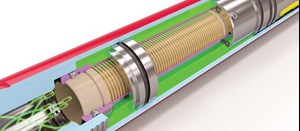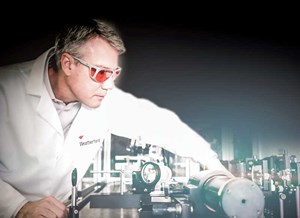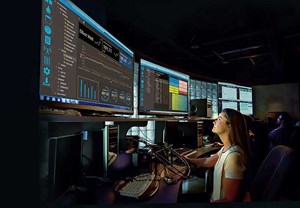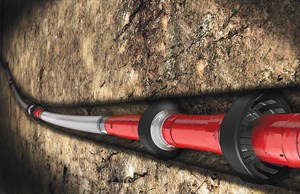Redefining intelligent completions
After 30 years of stops and starts, followed by progress and distraction, we’re finally on the verge of an intelligent completion. This has been a promise that we’ve made to ourselves throughout most of our careers. Now that it’s here, it’s not like most of us imagined. Rather than simply an intelligent completion, we’ve created an intelligent oilfield asset.

Rather than view completion as a whole, we’ve instead focused on parts of the system. Essentially, we simply improved bits and pieces downhole and called it intelligent. However, we really needed to rethink what a completion is. It’s far more than just a process that follows drilling. It’s the mechanism by which an asset is produced for two or three decades. Put simply, a completion is the production highway. It is the single item that supports well revenue for life. Given this reality, to create an intelligent completion, we must start working much more closely with our drilling teams, start thinking like our production teams, and create intelligence that seamlessly spans from the drilling phase into production.
EARLY ATTEMPTS
In August 2014, I stood before the board at Weatherford and shared a presentation entitled, “What’s new in the world of completion?” The main themes explored the rise of unconventional wells, sleeve developments, the daily new-and-improved composite plugs, some interesting coil/frac applications, and a push for what was termed by a highly respected BP engineer, “cased-hole functionality in the open hole.” Much has changed since then.
By this time, intelligent components had reached maturity, and their 20-year installation anniversary of the first SAGA Snorre B well was not far off. In the intervening period, all the majors have entered the intelligent-well market. It grew steadily between inception and 2014, but how much the technology had advanced was debatable. One can argue whether their full value was never realized, and the industry shuffled between controlling producers and controlling injectors, or both. Then mix in ever-longer lateral sections with “multiple zones,” or even multiple reservoir-layers, and the vexing question of how many inlets to control for an even greater conundrum. Where was the sense of feeding 1,000-ft laterals into one sleeve and pretending it had real impact on production, water production, and so forth from that section? Could you run enough sleeves or compartmentalize enough to make it worthwhile in a producer?
The case for high-angle wells or vertical wells of enough leverage was much easier to make. For those wells of greater extensions of four-plus discreet layers, the cost per zone, including how many wellhead penetrations were available to allow independent control, was always a trade-off. Most wells then, as is now, rely on N+1 lines, with N being the number of zones to be controlled, all with an independent open line and the 1 being a common, close line. To reduce the number of zones, the industry introduced a variety of hydraulic selector technologies. In short, our activity and advancement track record through 2014 was one of chasing the latest shiny object. We failed to see the forest for all the trees and apply these advancements to completion.
EXISTING TECHNOLOGIES
Fast forward to today, and there is a strong case for electrification from operators. As such, suppliers all have development programs, and some will be polishing up their early attempts. Having control, using a single line or multiple lines in one bundle is appealing, as losing one valve does not mean you lose them all. Inductive couplers push zonal control potential to the sand face, as do short-term wireless controlled sleeves, which only last as long as the batteries work, and signal attenuation isn’t great. So, what’s the big advantage? More zones for less penetrations, cheaper umbilicals in the subsea environment, less worry about control-line contamination from the surface, or gas ingress from the well?
Like all companies, we at Weatherford listen, cogitate, analyze, and then we do all three—fortunately, not all at the same time and not all for the same applications. There is unlikely to be one universal solution. We will qualify our electrical completion system by late 2020, and commercialize in 2021. We differ from some thought processes, like Janus, in that we are looking forward but equally looking to lessons from the past. The system, itself, ticks the boxes for a number of positions. It goes directly to close from any position, which is necessary for water injectors, and is instrumented with conventional or fiber optic gauges. We can have as many sleeves or node points that such an intelligent system would command.
So where does the backward-facing Janus come in? To realize the life-of-well longevity, we must move as many of the components that will likely cause a problem or fail from the well to surface. In fact, 90% of the electrical and electronic components are on surface. Secondly, we will be able to cycle the valve without a position change. In case of scale deposition and stiction issues, one valve failure doesn’t compromise the whole system.
What else is required? To be fair, this question is not just for the electrical-intelligent well, but also for hydraulic versions and others. This is about data. Sensor technology need not simply produce billions of data points that are stored in the Cloud until such time it becomes an all-consuming fog. What we are now seeing is that the modern-day completion engineer is not just plumbing a well that was conveniently left by the drilling fraternity, but now he/she is focused on production performance for the life of that well and potentially influencing the placement and requirements of the next.
Perhaps for the first time, and perhaps due to the nature of the challenge, difficult wells and more-leveraged wells have more than just a low price for all. Now, we are seeing a much more symbiotic relationship between the driller, the completion engineer, and the production engineer. What each does and what each needs now, impacts the other. Furthermore, at the end of the chain is the production engineer, who pays the bills.
HISTORICAL PERSPECTIVE
In 1931, Charles Millikan said, “there is nothing more important in petroleum engineering than a definite knowledge of the pressure at the bottom of an oil well, at an existing operating condition, and the relation of this pressure to the pressure within the producing formation. A knowledge of the bottomhole pressure is fundamental in determining the most efficient methods of recovery and the most efficient lift procedures, Fig. 1. Yet, there is less information about these pressures than about any other part of the general problem of producing oil.” What was true then, remains true today.

About 10 years ago, I attended an SPE forum on intelligent wells. I sat through four presentations on downhole flowmeters, and at that point, the number of meters sold to the industry was just two per year. I was forced to stand up and exclaim that if I was ever caught peddling downhole flowmeters, you could terminate my employment.
Today, and the world has changed. A senior executive from a major IOC recently asked me, “What’s the problem with downhole flowmeters?” We concluded that the industry had never understood the true value and has viewed them as a nice-to-have bit of bling. That, too, has changed, as explained to me by another operator. To set the stage, Weatherford had introduced the ForeSite production optimization platform, which introduced a whole new realm of possibilities in oilfield understanding and control. We now had the ability to integrate reservoir data, downhole flow and production measurements, surface production data, production-optimization workflows, and even plant data into one ecosystem—which is the term boffins use to describe the systems all interacting with one another to produce real-time analytics, instead of billowing clouds of data and fog.

While describing the ecosystem, this operator saw the confusion on my face and elaborated with an analogy that even I could grasp. “Your SCADA and ForeSite system are the brain,” he said, Fig. 2. “Your downhole, sand face, and surface instrumentation—all that data is the nervous system, and your traditional completion components, the packers, valves and sleeves, are the body. Add to that, automation, lift optimization, and 24-hr well testing create your fingers and thumbs,” he elaborated. “Welcome to the digital age.”
Armed with this analogy, I sought out the biggest brains in Weatherford, which we know can have a straight correlation of “big brain to big head” and, to borrow from So I Married an Axe Murderer, some of these heads had their own weather system. But working together revealed a simple premise: instead of filing away all these disparate files-upon-files of data, we asked, how can we actually use this? Instead of compiling reports and producing decline curves, we looked for behavior anomalies, problems, and even opportunities to be a bit less conservative. Can we draw down this well more than the practical rule without risk? Our new perspectives included:
- Early detection of water breakthrough, coning or interference from an adjacent injector.
- Early detection of anomalous flow, precursor of sand production, scale production, screen plugging, and more.
- Water-hammer effects in injectors and cross-flow.
- Well interference and mapping pressure support mechanisms.
- Impact producing above, at, and below bubble point.
If you can extend this understanding, you have a crystal ball into the future. This includes the impact on different phases of asset development, well placement, and an evolved completion design or technique. We can identify—through managed pressure drilling and completions—future hazards like over- or under-pressured layers, fractures, and provide warning before it happens.
The final piece of the puzzle was joining the downhole data to the surface production train. This includes how wells interact on surface, as well as how to de-choke the production train. Ten years ago, I had all the data I could ever wish for at my fingertips. The problem being, it was at my fingertips and not in what today is coined a true “Production 4.0 Ecosystem.”
CASED-HOLE FUNCTIONALITY
Back to my introduction, let’s revisit my BP engineer’s cased-hole functionality in the open hole. Setting aside the reservoir contact issues, accessing more of the reservoir (whether injector or producers), why would this be important? In a word, cost.
The world’s first open hole, multi-zone water injector with flow control was run in Angola. There has been many-an-SPE paper and conference presentation covering this topic. One would think it’s simple enough, but the key is, without a doubt, effective zonal isolation:
Injecting cold water. You exert massive tubing/screen stresses on the completion, much as you would in a cased-hole completion. These forces translate to massive tension on the packer, trying to pull it up hole. Of course, in the cased hole, you anchor to the casing via the slips, and if the loads are greater than even that capacity, the option for an expansion device remains. In the open hole, the element moves, or it fails—usually both.
Cycles. The wells would routinely experience shutdown, perhaps monthly—which leads to far more pressure reversals and load translations.
Sealing. In a typical cased hole production packer, element-to-casing stresses would begin at anything from 1,500 to 2,500 psi, to affect a seal. This effect would increase as differential pressure is applied. If the casing is, say, 80,000-psi material, the formation could be 1,500 psi or less.
Shrinkage. Where you are using the packer element or seal as the anchor, as the temperature drops, the element shrinks, and you lose contact—creating a perfect storm.
Non-round hole and key seating. Without a mechanism to limit the load as the packer expands to contact the long axis, the stress in the rubber on the short axis is off the charts.

And so, a packer was born to address these challenges. It sets with less than 200 psi, and applied rock-stress could absorb the full tension of mechanically isolating the element systems. The industry’s first open hole, selective injector wells were installed, and over the life of the project, some $250 million were sliced out of well construction costs, including non-productive time, casing needs, and no need for perforation, Fig. 3.
COMBINING TECHNOLOGIES
What more could be done? This brings us to the acronym, SPSTMZOHHGP—the single-position, single-trip multi-zone, open-hole horizontal gravel pack—it rolls right off the tongue, right? When faced with a 30-day completion program, multiple-cased hole frac or high-rate water packs, the industry found an alternative. When using a derivative of the same packer, and in combination with shunted screens, it was possible to gravel pack as many zones, as needed, in one run. A 30-day lower completion program became two days, and with that, per the SPE papers, an asset in Asia saved $1 billion in construction costs.
We see these practices applied in all major basins. As one CTO extolled, “this is the most important development since the rotary-steerable bit.” Staying with the shunt-screen technology, the gravel-pack fraternity celebrated widely with the advent of shunted screens—eccentric or concentric. All of our ECD challenges had been solved—no more inadvertent bridging and failed gravel packs. True success rates steadily improved. However, there were still failures. Today, you will see shunted screens with more erosion-resistant inlet ports, the addition of dehydration tubes to prevent cross-coupling pack-off, and higher-pressure tubes. But the devil is in the details, and we have, perhaps, the last 10% of the puzzle to solve.
Staying with the upper and lower completion theme, you may be aware of previous articles and World Oil Awards on the TR1P system. Like many of the better completion developments, TR1P is a completion design conceptualized in a collaboration between service company and operator. In this case, Weatherford and SNEPCO (Shell Nigeria). It, too, has been the subject of many industry papers. As the name suggests, it runs the upper and lower completion in one trip, particularly in deepwater environments. Its main driver was cost, and TR1P cut completion time by up to 60% while performing as if the well were a traditional lower, intermediate and upper completion design with no compromise on safety, no additional risk, and complete well functionality.
The TR1P design uses a combination of conventional tools and tools that are actuated using radio frequency identification technology (RFID). RFID gives well designers the ability to open and close valves, set packers, and activate and open in-line pressure barriers—all on demand. Here again, the cost-savings ran into the millions. Before moving on, how much easier is it to have instrumentation at the sand face, inline flow-measurement, and DTS fiber optics along the length of the well? Indeed, a multi-node intelligent well is now available, even when there is no lower, intermediate, and upper completion—just a completion. Now let’s give some thought to the drilling fraternity.
EXPANDING BEYOND COMPLETIONS
At Weatherford, the drilling, completions and production groups have teamed up to determine what more can be done for operators. As an industry, we tend to focus on the now and our part of the process. With Covid-19, low oil prices, and general personnel-movement and logistic challenges, operators are forced to cast their net wider. Let’s explore a few that might help.
AccuView was developed to move casing exits to a new level. With industry success rates for single-trip exits running at around 70%, AccuView provides a planning and execution tool, capturing global best practices, with the cumulative benefit of hundreds of-years’ experience and ensuring that wherever we operate, best practices are put into action. Essentially, when making the exit, a service engineer and driller have a path to follow. Provided they stay on this path, there is always a green light. Deviate from the path, and the red light appears. Each operation also can be watched remotely by global subject-matter experts. Planning and executing to plan has delivered a 100% success rates.
Our liner group questioned why this simple strategy could not be applied to liners. After all, we go up, we go down, we turn right, and we pump. Using simulators developed in conjunction with Maersk and adopting the principles of AccuView from our casing-exit brethren, the project was kicked off. It is in its early days yet, but during a recent Deepwater liner operation, there were several successful land trials, using the AccuView planning and execution tool, supervised remotely, and to great success. There was no Weatherford field specialist on the rig, Covid-19 restrictions, and time bar.
We also looked at Victus, which is the automated and digitalized managed-pressure drilling system. If you look at it from a different angle, why limit the efficiency, safety and accuracy benefits to only the drilling phase? Why not create managed-pressure completions? Here, I am not as concerned about controlling kicks and the traditional well-control aspects. I get that anyway. However, reducing ECD issues during the completion can make the difference between a successful screen deployment—gravel pack or not. Preventing fluid loss and formation damage can directly impact the completion and, ultimately, production. We can manage fluid and circulation pressure to achieve wellbore clean-up rates and critical velocity without inducing losses or compromising the state of the well before operations. One added attractive development is the ability to drill, clean up, and deploy tools in a continuous state of circulation. When you think back on TR1P applications, imagine the difference this capability makes—certainly on the nerves.
Vero is a state-of-the-art digital and automated tubular-running system. Again, this is the subject of many articles and papers, so I won’t dwell. Aside from joint-integrity benefits, Vero catches the eye with its 20% to 30% improvement in completion time. Vero also brings improved speed, efficiency and safety to the rig floor which is now virtually free of people—by which I remember battling past rig-floor crowds to run my completions. Getting people out of the red zone, and out of harm’s way, benefits everyone. As with Victus, MPD, AccuView, and Vero, so much of this has the capability of being supervised and supported remotely. We may never get to where post-TD drilling operations are free of personnel, but we have the capacity to dramatically reduce crew sizes and move people out of danger zones, with no compromise in efficiency, safety, or any successful completion operations.
VAULE ADDED
In summary, completions have moved on to remote operational tools, surface-controlled or remotely operated RFID, and other telemetry systems. Whether it’s open-hole over cased hole, step changes in equipment reliability, deeper wells, deeper waters, longer laterals—you name it, we’re challenged by it, and we’re overcoming them all.
But it’s perhaps outside the complex, but narrowing completion discipline that we’re seeing the greatest improvements. It’s about working with our drilling colleagues, so we deliver a better hole. We’re instrumenting wells that provide information—and not just data—to better influence how that well and future wells are managed. We’re far more cognizant of the fact that those weeks or months of drilling and completing can, and do dictate, how a well will produce for years into the future and how the asset must live with the consequences of decisions made during construction.
The objective has changed since the 2014 boom era. We’ve moved beyond creating a better tool, and have instead implemented multiple technologies to increase well longevity and maximize production into the future.
- Advancing offshore decarbonization through electrification of FPSOs (March 2024)
- Digital transformation/Late-life optimization: Harnessing data-driven strategies for late-life optimization (March 2024)
- The reserves replacement dilemma: Can intelligent digital technologies fill the supply gap? (March 2024)
- Using data to create new completion efficiencies (February 2024)
- Digital tool kit enhances real-time decision-making to improve drilling efficiency and performance (February 2024)
- U.S. oil and natural gas production hits record highs (February 2024)
- Applying ultra-deep LWD resistivity technology successfully in a SAGD operation (May 2019)
- Adoption of wireless intelligent completions advances (May 2019)
- Majors double down as takeaway crunch eases (April 2019)
- What’s new in well logging and formation evaluation (April 2019)
- Qualification of a 20,000-psi subsea BOP: A collaborative approach (February 2019)
- ConocoPhillips’ Greg Leveille sees rapid trajectory of technical advancement continuing (February 2019)


